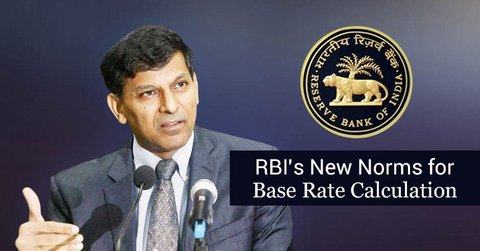
Marginal Cost of Funds based Lending Rate (MCLR) is a new lending rate introduce by Reserve Bank of India (RBI) which is to be implemented by 01-04-2016.
MCLR will be the internal bench mark rate of the bank along with existing lending rate system i.e. Base Rate from the Banking Industry. The sole reason the introducing the MCLR i.e. Marginal cost of funds based lending system is to [highlight]make banks pass on policy rate cut benefits to borrowers[/highlight]. MCLR will now linked directly with RBI interest rate moves.
Read : How To Calculate Debt Service Coverage Ratio (DSCR) ?
What are the Core Benefit of Introducing MCLR ?
The major benefit of introducing MCLR are :
- Existing Floating lending rates of the bank will be more responsive to its policy rate cuts like CRR, Repo or reverse repo.
- MCLR norms will improve policy transmission for new borrowings.
- Existing borrowers will have the option to switch to MCLR when it is introduced.
Read : How To Calculate NIM (Net Interest Margin)?
Highlights of MCLR
Major point related to MCLR are :
- Marginal Cost of Funds based Lending Rate (MCLR) will be the internal benchmark for All rupee loans sanctioned and credit limits renewed w.e.f. April 1, 2016
- The MCLR will be a tenor linked internal benchmark lending rate with Spread component for calculating the actual lending rate.
- Banks will review and publish their MCLR of different maturities every month on a pre-announced date.
- Banks may specify interest reset dates on their floating rate loans. They will have the option to offer loans with reset dates linked either to the date of sanction of the loan/credit limits or to the date of review of MCLR.
- The periodicity of reset shall be one year or lower.
- The MCLR prevailing on the day the loan is sanctioned will be applicable till the next reset date, irrespective of the changes in the benchmark during the interim period.
- Existing loans and credit limits linked to the Base Rate may continue till repayment or renewal, as the case may be.
- Existing borrowers will also have the option to move to the Marginal Cost of Funds based Lending Rate (MCLR) linked loan at mutually acceptable terms.
- Banks will continue to review and publish Base Rate.
Read : Top 6 Public Sector Bank After Merging
How To Calculate the MCLR ?
Th process of calculating the MCLR is little complex.Banks followed diverse methodologies for computing the minimum rate at which they could lend i.e. the base rate.
MCLR will be calculated after factoring in banks’ various other cost like
marginal cost of funds which is largely, the interest at which banks borrow money
Return on equity which is a measure of banks’ profitability
Negative carry on account of cash reserve ratio – the cost that banks incur on account of keeping reserves with the RBI
Operating costs and tenure premium – longer the loan term, higher the interest/premium
Read : Does Gratuity and PF Taxable ?
MCLR = Actual Lending Rate + Spread (Considering their business strategy and credit risk of the borrower, among other parameters.)
Note : Banks can review MCLR once a quarter till March 2017, after which they will have to publish on a monthly basis.
Banks also have to specify the interest reset dates on their floating rate loans with reset dates where gap between two reset dates cannot be longer than a year.
Read : What are Different Type of Money Supply in India?











Do You Want To Say Something :